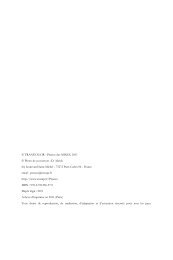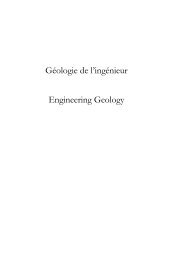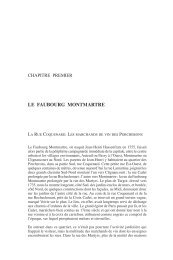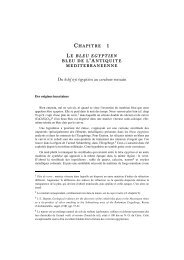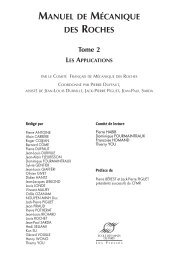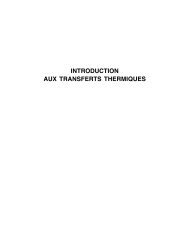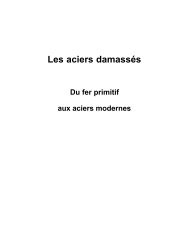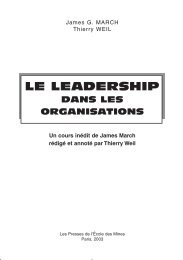Tribology of Manufacturing Processes - Presses des Mines
Tribology of Manufacturing Processes - Presses des Mines
Tribology of Manufacturing Processes - Presses des Mines
You also want an ePaper? Increase the reach of your titles
YUMPU automatically turns print PDFs into web optimized ePapers that Google loves.
4 th International Conference on <strong>Tribology</strong> in <strong>Manufacturing</strong> <strong>Processes</strong> - ICTMP 2010bonded to the metal substrate. The coated part is provided with a lubricant by dippinginto a hot bath <strong>of</strong> alkaline soap (typically sodium stearate) that reacts with the zincphosphate to form zinc stearate, which is eventually covered with excessive sodium soap[6,7]. The crystalline layer <strong>of</strong> zinc phosphate partly acts as a chemical agent binding thesoap to the surface, and partly as physical carrier for the soap. The coating procedurehas several environmental drawbacks [8-[13]: a) Sludge <strong>of</strong> (heavy) metal phosphates,which need to be reclaimed or buried, b) Large water requirement in the rinse baths, c)Periodic replacement <strong>of</strong> baths for degreasing, neutralizing, pickling and lubricationrequired, d) Large amounts <strong>of</strong> waste water, typically containing grease and tramp oils,acid, and soap. In addition to these environmental concerns, the phosphating processrequires prolonged treatment time, typically 5-15 min. and high bath temperature, 80-90˚C, [6,9].Zwez and Holz [14] report that modification <strong>of</strong> zinc phosphate coatings with calciumreduces the load <strong>of</strong> heavy metal zinc by 33% thus reducing the impact on environment.Within this conventional chemical treatment much progress has been made in the lastdeca<strong>des</strong> to reduce the consumption <strong>of</strong> chemicals and the amount <strong>of</strong> waste water. The use<strong>of</strong> advanced products for cleaning, pickling, phosphating and lubrication as well asimproved monitoring and adjustment <strong>of</strong> the chemical process prolongs the service life <strong>of</strong>baths considerably and reduces the consumption <strong>of</strong> chemicals by approximately 20%.For cold heading and drawing <strong>of</strong> wire, tubes and pr<strong>of</strong>iles, phosphating agents withnitrite or chlorate as accelerator are still widely used. This so-called “iron-free”phosphating process results in huge amounts <strong>of</strong> sludge <strong>of</strong> iron and heavy metalphosphates, which has to be disposed by burying. By introducing new phosphatingagents without the accelerating compounds <strong>of</strong> nitrite and chlorate the consumption <strong>of</strong>phosphating agents can be reduced by one third and the amount <strong>of</strong> sludge by 80-90%.For less demanding cold forging operations such as bolt production, the soap is replacedby oil with extreme pressure additives in form <strong>of</strong> sulphur and phosphor, [9,[15,[16].As alternatives to phosphate coating and soap, a number <strong>of</strong> lubrication systems for coldforging have been developed. They may be organized into the following groups:• New conversion coatings• Electrolytic phosphate coating• Microporous coating• Lubrication without conversion coating• Dual bath systems• Single bath systems2.1 NEW CONVERSION COATINGS2.1.1 Electrolytic PhosphatingMany <strong>of</strong> the drawbacks associated with zinc phosphates are eliminated by electrolyticphosphating, [12,17,18]. A sludge free phosphating bath is obtained, the use <strong>of</strong> acid forpickling may be avoided by electrochemical pickling, the treatment time is considerablyshortened, the working environment is improved and the electrochemical proceduremakes it possible to phosphate high alloyed steels and stainless steel, as developed in the6



